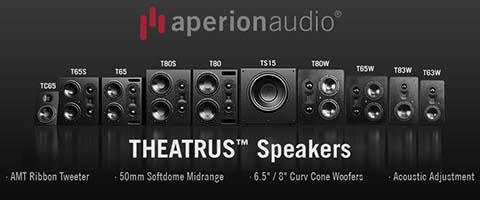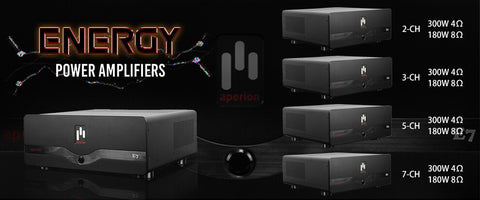Speakers can be hard to please. Place them at a disadvantage and even the best of the best will underperform, but treat them right and the most modest of models will elevate your listening experience to smile inducing levels. While some of you have probably gone through great lengths to optimize your speakers’ performance, there’s a good chance that most of you haven’t taken the time to dial them in. Luckily, there are a few simple steps you can take to breathe new life into your speakers and unlock their true potential.
Your Room Setup Matters

Believe it or not, your room has a significant effect on the sound you hear coming from speakers – even speakers that cost thousands of dollars can suffer in non-ideal environments. Simply explained, sound leaving a speaker travels straight toward a listener, but it also reflects off room boundaries (floor, walls, windows, etc.). These reflections are a mixed bag of good and bad. On the positive side, reflections can breathe depth and liveliness into the sound you hear. On the negative side, reflections can cause high frequencies to sound harsh and smeared and low frequencies to sound bloated and over-bearing.
Minimalist room environments and rooms with lots of windows, glass doors, and large areas of uncovered hard flooring are less than optimal. If you’ve ever experienced loud noise or shouting in a commercial building’s concrete stairwell, then you know how harsh and sonically impaired hard-surfaced environments can be. While that might be an extreme example, the point remains: try to get your speakers in an environment that has a balance of absorption and diffusion. There are some easy and aesthetically pleasing ways to make a room more acoustically desirable. Windows and glass doors should be covered by drapes, throw rugs can be used to cover hard flooring (especially in areas between a speaker and a listener), and bookcases can be placed along side and back walls (back wall should be chosen if only one boundary is possible). Also, make sure your listening couch (or chair) isn’t resting against a wall; pull it away from a wall for a better experience.
Sound Absorption
There are commercially available sound absorption products that can outperform the home-remedy measures described above. A quick Google search will reveal quite a few companies that sell wall mount acoustic treatments that attack reflection points and bass traps that sit in the corners of rooms. Most companies also sell specialized diffusion products that scatter high frequencies. If you enjoy do-it-yourself projects and have the proper tools, then there are plenty of instructions on the web for building your own treatments and traps using materials that are fairly easy to acquire.
Room calibration
Finally, take a moment to learn about room calibration software. Room calibration suites (such as Pioneer’s MCACC, Audyssey’s Mult EQ XT32, and Yamaha’s YAPO) can be found on most modern AV Receivers. They use a small microphone to measure the acoustic environment of your room and make adjustments to the receiver’s output in order to help control problem areas. Some of these suites are easier to use than others, but most can have a fairly profound impact on perceived sound quality. If you aren’t using an AV Receiver (or think your receiver’s onboard software is inadequate), then checkout some of the commercially available room correction products from companies like miniDSP or DSPeaker.
- - - - - - - - - - - - - - - - - - - - - - - - - - - - - - - - - - - - - - - - - - - - - - - - - - - - - - - - - - - - - - - -
Positioning Tips

Once you have your room squared away, it’s time to think about proper placement of your speakers. When designing the front-end of a two-channel system, it’s important to make sure the sound arrives at the center listening position simultaneously. This means that your speakers need to be symmetrically equidistant from where you typically listen. Use a measuring tape to make sure this distance is exact. The distance between your speakers should be more or less the same as the distance to your listening position (this measurement is speaker brand dependent, so experiment and see what works best). Some speaker manufacturers will suggest optimal speaker distances; check your manual if you have it available. You’ll also want to play with your speakers’ toe-in (again, this is typically speaker specific, so take some time to experiment). Speaker height is also important. In general, you’ll want your ears (when seated) to fall inline with or slightly below the tweeter.
Your speakers’ positioning in relation to front and side walls has a huge impact on stereo imaging and bass response. Jamming your speakers in the corners of a room is ill advised. Try pulling your speakers away from the front and side walls (at least a 1 to 2 feet). This might be a trial-by-error process, but if you take your time you’ll greatly improve imaging and depth.
Multi-channel setups can use the same principles detailed above for arranging the front left and right channels. Your center channel should be placed directly between the front channels and slightly back (creating a minor arc). The best possible scenario will have all front tweeters at the same height. Try to continue with the theme of symmetry when positioning your left and right surround speakers. These speakers are best placed directly beside or slightly behind the primary listening position, elevated about two feet above the listener when seated. Rear speakers should also be elevated and can be placed on the rear wall.
Implementing a Dolby Atmos array (with ceiling mounted speakers) introduces quite a bit of complexity to a system. Because Atmos and other immersive sound codecs are relatively new, the jury is still out on the best possible positioning for ceiling channels. More details will emerge as organizations such as THX and professional reviewers continue testing performance using a variety of speaker configurations.
- - - - - - - - - - - - - - - - - - - - - - - - - - - - - - - - - - - - - - - - - - - - - - - - - - - - - - - - - - - - - - - -
Dial-In That Sub

Taming your subwoofer can be a difficult task but is absolutely crucial to achieving great sound. For the purpose of this article, we’ll assume you own a subwoofer that has enough power to properly address the size of your listening room. If you aren’t sure, then this is a good time to contact your preferred manufacturer to ask the most basic question: “Do I have enough sub?”
There are quite a few ways to achieve an even and tight bass response, but, like anything in the audio world, some are more complicated than others. In the name of brevity, we’ll stick to the basics that most anyone can handle without investing in additional equipment or spending time learning how to take complicated measurements.
STEP 1
To start, you’ll need to assess your sub’s placement within your room. Begin by placing the subwoofer in your primary listening position (move your chair or couch to allow for this). Next, play bass heavy material and do the sub-crawl (get on your hands and knees and methodically crawl around your room listening for the place that has the best – most even – sounding bass). Once you’ve found the best location, move your subwoofer there, reposition your couch, and have a listen from your primary seating position. If you like what you hear, then consider yourself lucky and leave the sub in that position.
STEP 2
Next, check your system’s crossover frequency in your AVR’s settings menu (if you aren’t using an AVR, then the crossover will be set using a knob or switch on the back of your subwoofer; if you are using an AVR, then make sure your sub’s crossover is disabled). The standard recommended crossover setting is 80 Hz, which represents the frequency at which sound becomes increasingly difficult to localize. This 80 Hz mark isn’t a hard and fast rule, but a rule of thumb that can be shifted to lower and higher levels depending on the playback abilities of your front speakers (for example, you might find that smaller bookshelf speakers sound better with a crossover setting of 100 Hz or higher). So, find some deep bass demo material and experiment with the setting.
STEP 3
Finally, adjust your sub’s gain setting, which is another trial-by-error process. Assuming your speakers are calibrated at 75 dB, use an SPL meter (C-Weight, slow) and play your AVR’s sub channel test tone. Adjust the gain control until the meter reads about 80 decibels at your primary listening position. This will get you to a good starting point. Now, play more demo material and make adjustments to the gain control as necessary. Your goal is to find bass that is smooth and seamlessly blended with output from your speakers. Make sure you aren’t pushing your sub too hard. If you’re finding that your sub struggles to achieve a pleasing response, then move the sub closer to a wall or corner of the room. This kind of placement will help weaker subwoofers boost their performance capability through tapping into room gain.
If you have access to room correction software on your AVR, then this is a good time to revisit the speaker calibration process. Don’t panic if your AVR runs its calibration software and sets your subwoofer at a distance that appears to be incorrect – its distance measurement setting helps to compensate for delay and allows the resulting bass to sound smooth and integrated. After going through the process, re-check your subs gain control to make sure it still hits levels that sound pleasing to your ears.
- - - - - - - - - - - - - - - - - - - - - - - - - - - - - - - - - - - - - - - - - - - - - - - - - - - - - - - - - - - - - - - -
Stands and Isolation

If you own bookshelf speakers, then speaker stands are a must. Setting speakers on stands allows you freedom to play with optimal placement and helps to get tweeters at or near ear level. You can find stands in a variety of sizes and designs. Some stands have riser poles that can be filled with sand, which can reduce or eliminate unwanted resonance in relation to the stand (use dry sand, which can be found at most hardware stores). There are a variety of opinions about how much of an impact sand-filled speakers stands truly have, but this is an inexpensive option that might tighten-up sound and improve overall clarity. Another inexpensive option for subwoofers (only) is the integration of a Gramma Pad, which can completely eliminate unwanted floor rattles and buzzes associate with a subwoofer sitting on a hard floor surface.
If you’re looking to really up your game, then purchasing a product such as Isoacoustic’s isolation stands can have a high-level impact on your speakers’ imaging and nuanced playback capabilities. Using proprietary technologies, these stands effectively decouple speakers from any surface while moving fore and aft during playback (resisting side-to-side movements), keeping the speaker’s cabinet and driver moving in a direction that is most beneficial from a physics perspective. The result is significantly tighter imaging and a noticeable expansion of the soundstage. The investment factor is relatively low considering the impact on perceived sound. These stands are definitely something to consider when looking for ways to squeeze more out of your speaker’s performance capabilities.
Hopefully these tips will help inject new life into your speakers and overall listening experience. Take your time and be patient as you go through each step, it’s worth it. For more information about particular issues you might be experiencing, don’t be shy about visiting the Axiom Audio forum to ask questions. Your ears will thank you!

Complete Your Sound System Solution

Sign up for our newsletter below, and join our social media groups to stay up to date with the latest news and information from Aperion Audio!
 |
 |






